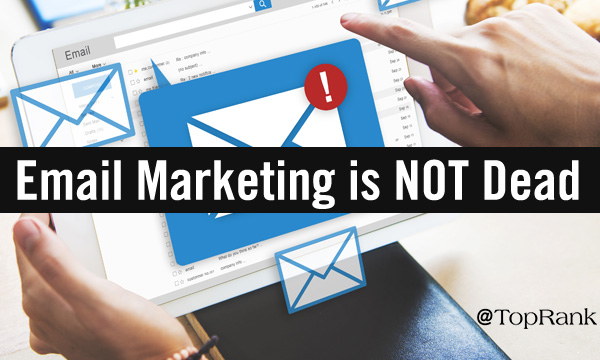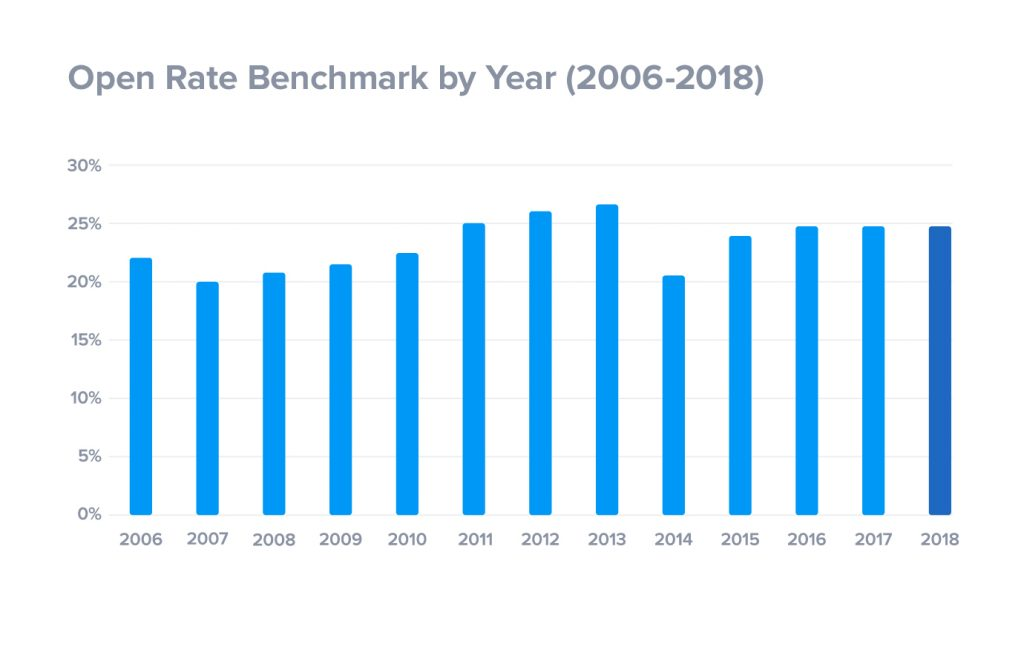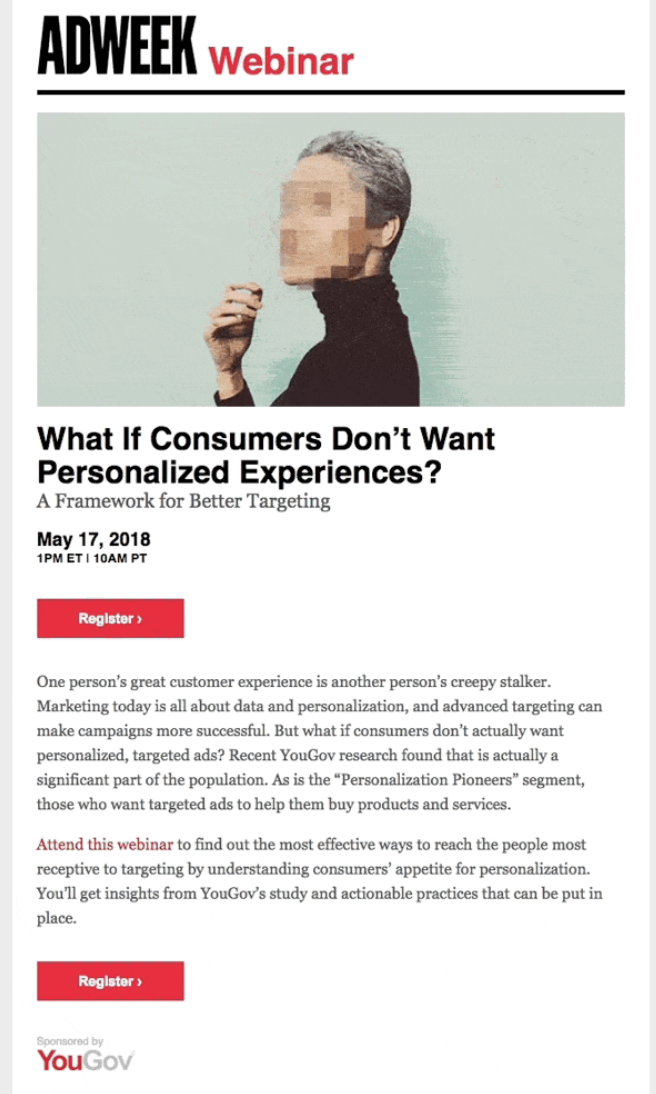
 Oh, look. Another death of email marketing headline. All too often, we see posts that lead with this provocative clickbait proclamation, while keeping the contradicting nuances under the surface. Ironically, this kind of practice is exactly WHY email marketing has seen its reputation tarnished. The focus has shifted too far toward style at the expense of substance. Marketers became so singularly obsessed with compelling opens and clicks, through irresistible subject lines and poppy CTAs, that many of us lost touch with the core value of this digital channel: direct, one-on-one engagement. I’m here to tell you that this value still exists, and might be more essential today than ever, in spite of (maybe even because of) the waters becoming so muddied. Recipients will welcome a little freshness and clarity in their inbox, from those brands and influencers that are willing to buck the trend. Dead? No way. Email marketing is alive and well, and it can still be a central component of a successful, customer-centric marketing strategy when done right.
Oh, look. Another death of email marketing headline. All too often, we see posts that lead with this provocative clickbait proclamation, while keeping the contradicting nuances under the surface. Ironically, this kind of practice is exactly WHY email marketing has seen its reputation tarnished. The focus has shifted too far toward style at the expense of substance. Marketers became so singularly obsessed with compelling opens and clicks, through irresistible subject lines and poppy CTAs, that many of us lost touch with the core value of this digital channel: direct, one-on-one engagement. I’m here to tell you that this value still exists, and might be more essential today than ever, in spite of (maybe even because of) the waters becoming so muddied. Recipients will welcome a little freshness and clarity in their inbox, from those brands and influencers that are willing to buck the trend. Dead? No way. Email marketing is alive and well, and it can still be a central component of a successful, customer-centric marketing strategy when done right.
The Rise and “Fall” of Email Marketing
This life experience might be unique to fellow millennials, but I’ll never forget the jolt of excitement I felt as a preteen logging into America Online in the mid-90s and hearing those three magical words: “You’ve got mail!” The internet in general was too new and grand a concept for my young mind to grasp, but anyone could take delight in a mysterious message sent expressly to you — like a present waiting to be unwrapped. via GIPHY Fast-forward a couple decades, and the quaint charm of a full inbox has largely disappeared. Irrelevant messages began to proliferate and pile up like AOL trial discs. Spam started running amok, to the point where — as of March 2019 — 56% of all email messages were categorized as such. The sheer volume of messages we receive, and the dread of digging through them all, can cause legitimately troublesome levels of stress and anxiety. As a result, many emails are now being cast aside, either because inundated human users click delete instead of open, or because increasingly stringent filters are diverting them to the spam folder — especially if they come from a company or unfamiliar sender. There’s no doubt that trust has been shaken. Anecdotally, I’m sure most people reading this have been scarred by an experience where they had to completely shut down an email address because it became overwhelmed by promotional junk, or where they repeatedly tried to unsubscribe from an unwanted newsletter to no avail. It is at times like these that well-intentioned, creative, value-driven marketers can answer the call and rise above the fray. Here’s how.Rejuvenating Your Email Marketing Strategy
A fact that might surprise you: open rates aren’t in a state of steady, ceaseless decline. In fact, according to Super Office, the average rate has generally been increasing (or at least remaining steady) year-to-year over the past decade-plus: Meanwhile, a new Email Usage Study from Adobe finds that the average person spends 5+ hours per day checking email, including 3+ hours at work. As Adobe’s Sarah Kennedy puts it in a blog post: “The Adobe survey findings solidify how important email still is in the everyday lives of our customers, and this means there is still a big opportunity for marketers to utilize email to engage with people in relevant and useful ways.” Relevant and useful. Therein lies the key. Here’s how we can pursue these ideals.
Meanwhile, a new Email Usage Study from Adobe finds that the average person spends 5+ hours per day checking email, including 3+ hours at work. As Adobe’s Sarah Kennedy puts it in a blog post: “The Adobe survey findings solidify how important email still is in the everyday lives of our customers, and this means there is still a big opportunity for marketers to utilize email to engage with people in relevant and useful ways.” Relevant and useful. Therein lies the key. Here’s how we can pursue these ideals.
Refine Your Mailing List
First of all, opt-ins are essential. If you can’t verify that a person on your list actively volunteered to receive emails from you, remove them. You might even want to consider a double-opt-in (send a confirmation email once a person signs up). It’s better to write for 10 people who truly want to receive your messages than 100 who are ambivalent or worse. From there, any type of segmentation you can do will help. Can you divvy up your list based on areas of interest or specialization? If so, you’ll be able to create different content (or even slight variations of the same content) oriented more toward the specific individuals receiving it. A little personalization goes a long way. [bctt tweet="It’s better to write for 10 people who truly want to receive your messages than 100 who are ambivalent or worse. @NickNelsonMN #EmailMarketing" username="toprank"]Use Email to Build Relationships, Not to Sell
There are multiple problems with salesy emails. One: people generally don’t like them. Two: spam filters tend to be triggered by the terminology used in these messages. Three: they represent a fumbled opportunity. When someone opts into your newsletter and then starts getting overtly pitched right away, it can feel like a betrayal of trust. As a relatively direct and personal form of marketing communication, email should be used to deliver value and build brand affinity. This is not to say you must avoid any type of lead generation elements in your messages, but make them subtle and sparse. [bctt tweet="When someone opts into your newsletter and then starts getting overtly pitched right away, it can feel like a betrayal of trust. @NickNelsonMN #EmailMarketing" username="toprank"]Speak as a Human, to a Human
Your emails should never come from an address that looks like this: noreply@company.com. Use a real person’s name in the sender field (an executive or marketing manager or whomever you want to use as the face of your outward brand communications) and craft content in a way that feels human and friendly. Ann Handley, Chief Content Officer at MarketingProfs, has an awesome newsletter called TotalAnnarchy that epitomizes this genuine vibe. At Social Media Marketing World earlier this year, she gave a talk about creating a newsletter people want to read. Among her tips: focus less on the NEWS and more on the LETTER, make it delightful, and write as if your message were only going out to one person. I love the way Ann frames the present value of this channel as a marketing tool: Email is the only place where people, not algorithms, are in control. [bctt tweet="Email, when it's done well, is like hot fire. It can burn like nobody's business. Ann Handley @MarketingProfs #EmailMarketing" username="toprank"]Make Your Emails Visually Interesting
This is tricky terrain because different email clients will display images differently (and sometimes not at all) but in general it’s wise to err on the side of making your emails more colorful and lively. Among their examples of powerful B2B marketing campaigns, Campaign Monitor shares this webinar promo email from AdWeek featuring an animated GIF to infuse their content with understated movement. (Example via Campaign Monitor) Just like on social feeds, compelling visuals can make your emails stand out in a crowded inbox. But make sure you don’t cross the line into gaudiness.
(Example via Campaign Monitor) Just like on social feeds, compelling visuals can make your emails stand out in a crowded inbox. But make sure you don’t cross the line into gaudiness.
Make Email a Thoughtful Part of Your Overall Strategy
“We need more traffic to our blog post. Do an email blast.” This kind of reactionary thinking is a problematic aspect of email marketing. As we say repeatedly, promotion should be built into campaigns from the start, and every channel should have a distinct purpose. Connect your email strategy with your goals and give it the proper effort to become a worthwhile standalone piece rather than an obligatory add-on.Bring Your Email Marketing Strategy Back to Life
The rumors of email marketing’s death are greatly exaggerated. This channel can still be a key fixture in your content strategy if you give it the care and attention it deserves. But like other content channels, in order to maximize its efficacy we need to emphasize quality over quantity, focus on building trust-driven relationships, strike a human resonance, spice up the visuals, and connect it to our larger goals and strategy. When you achieve this, you just may reignite that “You’ve got mail!” spark of wonder that recipients feel when your messages pop up in their inbox. Email marketing isn't the only form of promotion that may be missing from your strategy. Learn how to cure what's been called "invisible content syndrome."The post Return to Sender: Email Marketing Is NOT Dead, But It Needs Rejuvenation appeared first on Online Marketing Blog - TopRank®.
from Online Marketing Blog – TopRank® https://ift.tt/2neNkLy
via IFTTT
